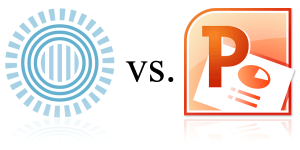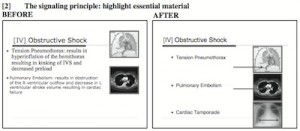I recently visited one of my teachers from high school and was greatly amused to see her teaching class from an archaic overhead projector. I did not understand why, in a world with so much innovative technology, she had opted to use such outdated equipment. The experience caused me to ponder the extent to which technology has become integrated in our culture, and how this has affected the increasing role of multimedia software in education.

Tools like PowerPoint, podcasts, video tutorials, etc., offer new and innovative teaching methods and possibilities. As a result, these technologies are used so frequently that it has become almost more unusual for a professor NOT to use some sort of multimedia tool in conjunction with their lecture. PowerPoint, especially, has become a popular multimedia resource for professors because of its ease of access and ability to streamline information into bullet-pointed lists.
While the software offers a variety of options for presenting and configuring information in many different ways, most professors still opt for the classic bullet-point format. We have all had that professor who lectures quickly, flipping through plain slides overloaded with text, resulting in a mad rush to record the information. Ultimately, this leads to confusion and the propagating of washed-out expressions and bored students. Sadly this detrimental practice is so common that researchers have named the phenomenon, “death by PowerPoint.”

If this is the case, then how is the use of PowerPoint as an educational tool any better than my teacher’s antiquated, boring overhead projector?
Medical education provides an extremely high stress environment where students must learn enormous amounts of information in a limited amount of time. In such a high-stake atmosphere, improvements in the effectiveness of educational tools like PowerPoint could have a massive effect on the education of our country’s upcoming physicians.
So, are there ways to improve the use of PowerPoint and other multimedia tools to make them better resources for imparting information to students?

Example of Adapted Powerpoint Slide
Research done by Richard E. Mayer has directly addressed many of these questions. Mayer has established a number of theories and principles regarding design and implementation strategies of multimedia educational materials through his work with evidence-based education materials. Both his and supporting research has shown that incorporation of Mayer’s multimedia design strategies involving college-level students showed increases in short-term retention of information. In addition, current research has shown that incorporation multimedia (similar to Mayer’s design) led to an increase in the short-term retention of information by medical students.
Preliminary evidence has shown that PowerPoint and its use can be redeemed, but still leaves many questions unanswered:
(1) Is there a possibility of improving multimedia presentation to improve long-term information retention?
(2) Do the use of multimedia tools improve student’s ability to incorporate information into a clinical setting?
Sources:
Mayer, R. Multimedia Learning, 2nd edn. Cambridge: Cambridge University Press 2009.
